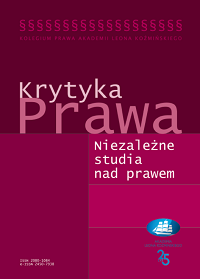Służba zagraniczna w monarchii austro-węgierskiej (1867–1918)
The foreign administration of the Austro-Hungarian Empire (1867–1918)
Author(s): Iván HalászSubject(s): Politics, Governance, Political history
Published by: Akademia Leona Koźmińskiego
Keywords: Austro-Hungarian Monarchy; consular service; diplomacy; Habsburgs; ministry
Summary/Abstract: The Austrian Ministry of Foreign Affairs was established in 1848, during the heated months of the revolutions of the time and “the Spring of Nations.” Starting 1869, the ministry was called the Imperial and Royal Ministry of the Empire and Foreign Affairs. In line with the conservative character of the monarchy, most of its workforce was still drawn from the environment of aristocracy and gentry, and the system was organised in a way to ensure that the staff was suitably trained. The main institution responsible for the education of professionals was the Oriental Academy established in 1754. In 1898 the Oriental Academy was transformed into the Imperial and Royal Consular Academy. Despite regular reorganisations, the Vienna Ministry of Foreign Affairs maintained a relatively stable internal structure, whose individual components were later implemented by a number of successor states. The central administration was divided into four sections, or departments. At the ambassador level, the Habsburg Empire had representations in the German Empire, France, Great Britain, Italy, Russia, Turkey, and at the Holy See that year (1883). The other diplomatic missions were headed by legates and appointed ministers. Two bodies had a significant impact on the monarchy’s foreign policy decision-making: the Joint Council of Ministers and the Military-Political Conference.
Journal: Krytyka Prawa
- Issue Year: 11/2019
- Issue No: 1
- Page Range: 31-32
- Page Count: 2
- Language: Polish

